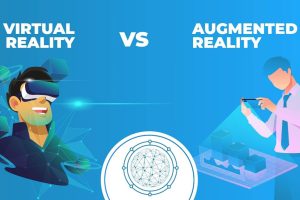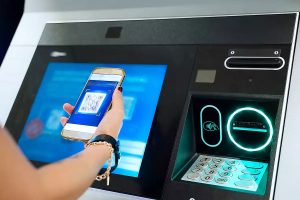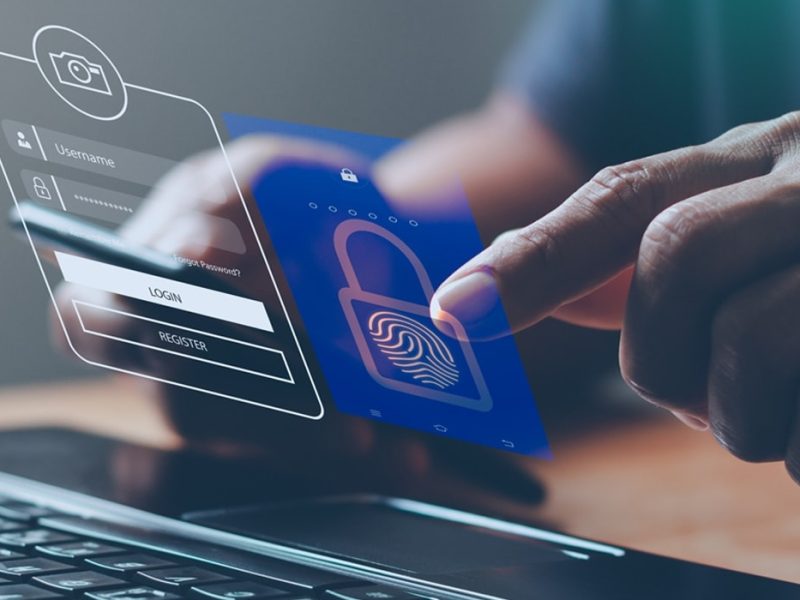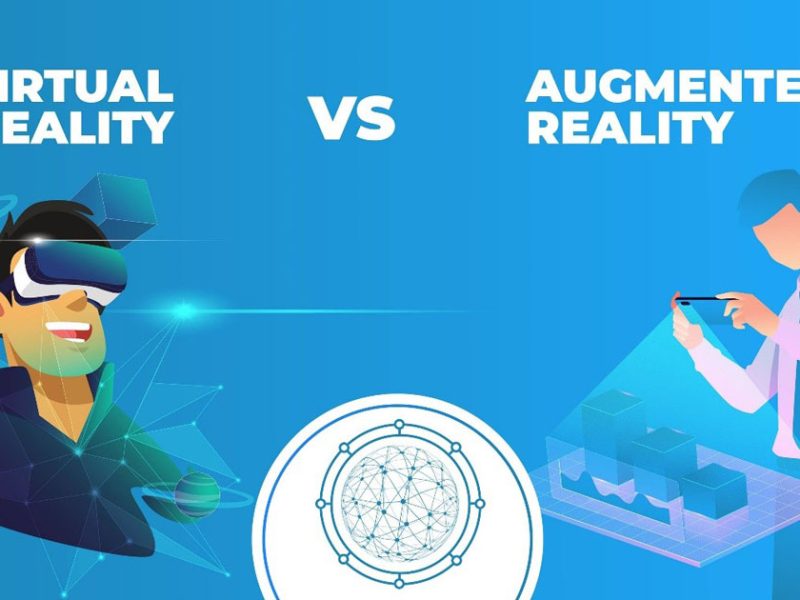(Biometric verification is becoming more popular for improving the security of digital payments due to the increase in cyberattacks)
The globe has seen an unparalleled boom with technological advancements. The impact of technology has evolved fintech, banking system, and commerce. It has revolutionised every sector making services faster and more convenient than ever.
However, with this rapid development, there has been a rise in the number of cyber attacks resulting in deep concern for digital payment security. Cyber attacks have been a constant threat to the fintech industry in recent decades. Whether it’s about fintech, transaction, finance, or the healthcare industry, security is the utmost priority for all. This is why, There has been a demand for robust security measures to avoid fraudulent activities.
Biometric technology has emerged as the potential solution serving as a strong security measure in various payment sectors. The implementation of this can be seen as a flood of security rules; e.g., the Bank asks for biographical codes and passwords. Let’s get a better understanding of what biometric authentication is and how it can help in stopping fraudulent activities.
What is biometric authentication?
Biometric authentication technology is a security measure that protects from major security threats by using the Biometric features of a person. The usage of biometric authentication has significantly risen in recent times. They also ensure the Digital payment security of any transaction.
Biometrics provides the most realistic way to enhance your security. It’s a method of verifying an individual’s identity using various unique characteristics such as fingerprints, face recognition, and voice authentication.
Biometric concentration can be easily set up in any physical environment. An individual’s Biometric features are a unique set of characteristics that makes them unique, helping them ensure an identity.
The usage of biometric authentication has gone through many unprecedented changes over the years, making its way to smartphones, consumer devices, and computers. Government to private organizations enforce biometric authentication in many areas of airports, military bases, and entry ports to maintain a rigid security structure. Moreover, you should also know about the best gadgets for tech enthusiasts available in the market.
Benefits of biometric authentication in strengthening digital payment security
Biometric verification is becoming an essential component of digital payment security as it offers enhanced levels of protection compared to traditional security methods. Moreover, it provides a more secure identification process. This technology uses the most crucial parts of the human body, like facial recognition, voice recognition, and fingerprint scan, to identify a user.
Here we will understand how it’s helping increase digital payment security.
Improved security:
Biometric authentication for banking is a secure method to avoid scams and a reliable approach all around. This method is a stronger alternative to those hassle and boring security methods that offer enhanced security. Moreover, biometric recognition can create a stronger and hassle-free environment of heightened security.
Enhanced accessibility:
Biometric authentication provides better security and more convenient ways than traditional passwords and security keys. In this technique, people can use the physical features of their bodies to access their accounts. This removes the necessity of putting unnecessary complexity into remembering difficult passwords.
Enhanced operational efficiency:
Biometric use in banking and digital payment security can offer a great advantage to customers. They reduce time consumption, enhancing operational security. Additionally, banks that use these types of verification methods also reduce manual reviews and investigations, subsequently increasing their operational efficiency.
Lower scams:
Biometric authentication in digital payment security also reduces scams by implementing a strong security structure that protects against security threats like identity theft or account takeover. It identifies the abnormalities in user behavior that can be for malicious intent. Banks and financial institutions can take strict security action in these incidents to mitigate any financial damage.
Disadvantages of Biometric Authentication
Privacy Issues:
Biometric information is highly personal and raises privacy concerns because it involves capturing and storing sensitive information.
Spoofing Vulnerabilities:
Biometric systems can be vulnerable to spoofing, where attackers attempt to copy or manipulate biometrics.
Cost and Performance:
Using biometric authentication systems is expensive and requires special hardware, software and infrastructure.
Cultural and social acceptance:
Some individuals may have cultural or social restrictions regarding the provision of biometric data, which may lead to refusals or objections to accept biometric authentication.
False recognition and denial of authenticity:
Biometric systems can have false recognition (recognition of impostors) or denial of authenticity (removal of legitimate users), affecting accuracy and reliability.
Organisations considering using biometric authentication should carefully consider the advantages and disadvantages to strike a balance that addresses security concerns while considering users’ privacy and assurance.
Types of Biometric Authentication
Fingerprint Scanners:
Fingerprint scanning is one of the most common types of biometric authentication used in multiple devices to protect from security threats. It records swirls and ridges of an individual’s fingerprints. Also, a fingerprint is the unique part of a human that describes his identity. Everyone has unique fingerprints. Even twins have different fingerprints on their hands.
The latest version of fingerprint devices advanced the scanning of vascular patterns of an individual’s fingers. However, fingerprint technology is not fully secured and has its flaws. Despite that, it is one of the most reliable and popular technologies used by many organizations and customers.
Facial recognition:
Another popular method of Biometric authentication is Facial recognition. Facial recognition is a method that matches different angles and measurements of a user’s face. The imprints that are taken from our faces are called faceprints. Faceprints are used in many devices, such as mobile and laptops, to complete identity verification.
Facial identification is increasingly getting popular in Banking and maintaining digital payment security. This technology is almost utilised in all the digital payment apps Apple Pay, Selfie Pay, and AliPay for added security protection.
Voice identification:
Voice Identification is a popular technology of Biometric authentication with many potential benefits. It lists the vocal characteristics of a person, which is used for authentication of his identity. Using artificial intelligence and machine learning, various voice components, such as tone, accents, and frequency, are measured to create a voice imprint.
Voiceprints allow customers to avoid security pins and passwords when they have unique voice prints. According to research, approx $8 billion in voice assistance will be imprinted in different sectors by the end of 2023. Thai shows the importance of voice commerce opportunities. Voice identification is largely different from passwords in terms of security as they use encryption technology that is hard to decode.
Eye scanners:
Eye scanners are another popular method to strengthen security. Two types of eye scanners are available in the market: retina and iris scanners. The retina scanner recorded using a bright light, forming visible blood vessel patterns. Then these patterns are read and analyzed by the scanner and compared against thousands of databases.
The same method is also used for iris scanners. The iris scanner also looks for strong patterns that preset across the pupil of the eye.
Future Expectations and Trends
In the future, the use of biometric technology in payment security is expected to continue to increase. Some of the needs and future developments include:
- Multi-factor biometric authentication: To improve authentication and fraud prevention, multiple biometric devices such as fingerprint, hand, and face are recognized together.
- Wearable Biometric Devices: By integrating biometric sensors into wearable devices such as smartwatches for fitness trackers, you can achieve fast and secure payment authentication on the go.
- Biometric payment cards: These cards have biometric sensors that allow users to identify features using fingerprints or other biometric technologies.
- Internet of Things (IoT) Biometrics: Add biometric authentication to IoT devices for secure and easy payments online.
- Voice Recognition: Innovations in voice recognition technology increase accessibility more easily and comfortably by ensuring the security of payments made with voice commands.
- Blockchain payments based on biometric technology: Use the flexibility and security of blockchain technology to improve the confidentiality and integrity of biometric data used in payments. Using biometric authentication in mobile payment applications to increase security and prevent unauthorized access or fraudulent transactions.
- Standardisation and interoperability: The industry should establish industry-wide biometric authentication standards to ensure compatibility and interoperability of various platforms and payment systems.
Biometric Authentication in Mobile Applications
It is becoming more common in mobile applications and provides a secure and seamless user experience. Biometric authentication in mobile applications works as follows:
- Registration: When installing the application, it prompts users to register their biometric information, such as fingerprints or face.
- Biometric data capture: The mobile phone’s biometric sensor captures the user’s biological characteristics and transforms them into unique digital models.
- Template Storage: The device’s hardware or a protected area securely stores the digital template, ensuring the confidentiality and integrity of biometric data.
- Authentication Process: When users try to log in to the application, they will be asked to authenticate using their registered biometric information. The device compares the captured biometric data with a stored sample for identification purposes.
- Access Granted or Denied: If the biometric data matches the stored pattern, access is granted and the user can continue using it. Otherwise, access will be denied and another authentication will be required.
Authentication in mobile applications increases security, eliminates the need for passwords and provides a simple, seamless user experience, making it the choice of many application developers.
Biometrics, One of the best methods
They are powerful tools that provide accurate and effective personal identification. It involves the process of identifying a person based on their biometric characteristics. Here’s how biometrics works:
Registration:
The system captures and records a person’s biometric information in a database during registration. This may include fingerprint scanning, facial recognition, or other biometric methods.
Template Creation:
Process the generated biometric data to create a digital template that represents the unique characteristics of the individual’s biometrics. This model can be used as a reference for future comparisons.
Match and compare:
The system recaptures the person’s biometrics and compares them to the stored sample when authentication is required. The algorithm analyses the captured data and evaluates its similarity to the model.
Authentication decision:
Based on the comparison, the system determines whether the captured biometrics are similar to the pattern stored in the authentication system. If the match is successful, approval is given. Otherwise, access will be denied.
Biometrics has many applications, including accessing secure facilities, locking devices, identifying alters, and identifying individuals in many industries, including banking, medicine, and law. It provides a reliable and effective way to establish an identity while minimizing the drawbacks associated with traditional authentication methods.
Conclusion
Biometric authentication is a standard method to ensure security. With the advanced technological revolution, users will continue enjoying enhanced security’s top benefits. Moreover, biometric technology will continue to evolve to bring more efficient security solutions.






















